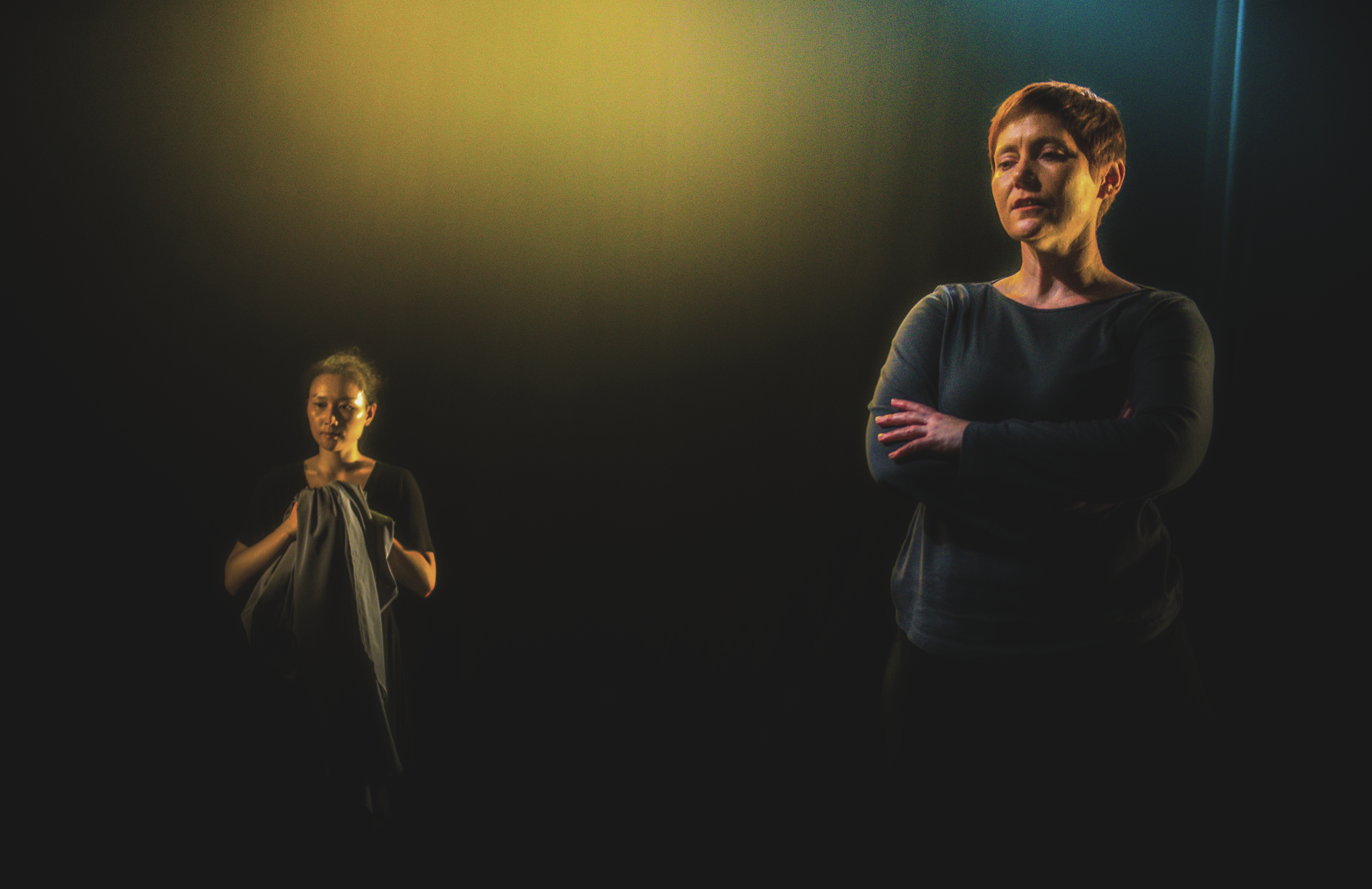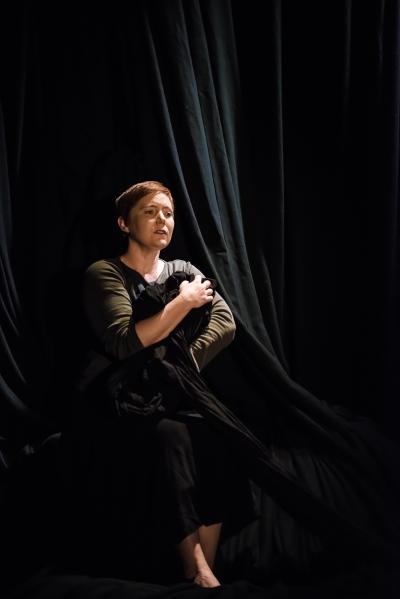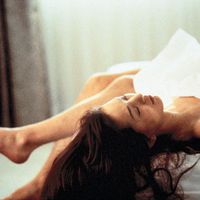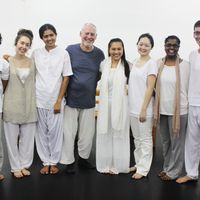Intercultural theatre practices | Interview with Frances Barbe

As part of the media partnership with Intercultural Theatre Institute (ITI), we have interviewed Frances Barbe, Director, Choreographer and Performer and one of the speakers at the upcoming Asian Intercultural Conference in Singapore (27-30 November 2017). Frances has shared her extensive experience in working in intercultural theatre and in particular with different training techniques, including butoh dance.
You have worked in Europe, Asia and Australia. Can you share more about your experience of intercultural theatre in these 3 regions?
My first experience of working interculturally was in a bilingual production of Macbeth in Kyoto in 1995 with Zen Zen Zo. I was young and a new graduate then, so that was a steep learning curve, but also a great experience. I was movement director / choreographer and the production was very physical. Half the cast were Japanese and the others were from Australia, Britain and America. I learnt a lot about the importance of good quality communication – which should be regular, honest (obviously) and explicit. There is a danger to make assumptions about what other people’s expectations are – it’s important to have open and explicit dialogue. Issues can arise if expectations are not explicitly stated.

©Stephen Heath
We had two translators who were amazing, but everything took a bit longer to allow for translation both in the moment in rehearsal, and with the script adaptation, which was constantly being adapted and updated. It’s important that there is time for additional translation and discussion in intercultural and international work.
I have learnt so much about myself and about theatre from working with my peers from around the world and particularly from Japan. Most of my intercultural work has been with Japanese artists. It’s an opportunity to consider what I do and why I do it that way when I have to explain or translate for other languages and other cultures.
In a collaboration with butoh dancer, Yuko Kawamoto in London, we enjoyed endlessly exploring each other’s languages and considering how different words evoked different movement qualities from us. I remember a particular discussion about the many different words for “stop” in Japanese that captured different ways in which we, as dancers, could be “stopped”. It was fascinating.
The butoh company I worked with in Germany, with director Tadashi Endo, always involved a very international cast. The core company I worked with for the longest were Australian, Japanese and Israeli. At other times, there were artists from Germany, Austria, Russia, and Italy. Living and working and touring together was a fascinating insight into how people are powerfully informed by their cultural background and language. What I loved in our many conversations in these international casts was discussions around words that could not be translated from one language to another. For example, “genke” or “ma” in Japanese. The fact that we cannot always find an equivalent word speaks of the way culture informs language, and how language builds culture. I also developed an appreciation for my own language, English, and how beautifully specific it could be especially with adjectives and adverbs. It’s easy to feel like other cultures and languages are more interesting than your own, and I have that relationship with Japanese culture for sure. But ultimately, I have a deeper relationship with my own language and culture after being enriched and expanded by contact with others.

© Simon Woods
I think it’s important to say though that actually the challenges I have talked about - language, translation and making expectations explicit - arise in all collaborative practice. Theatre is always collaborative. So in some ways, intercultural work extends and exaggerates the collaborative demands of all theatre. The challenges are perhaps more visible and crucial in intercultural work, but we should always be careful and considered with our communication, and sensitive, respectful but honest if we are to have a high quality process. Even if we speak the same language, what I mean by one word might not be exactly what you interpret that word to mean.
As part of your training/teaching experience, you use Butoh dance techniques to help actors in their creative process. Can you tell us more about this?
I trained in butoh in Australia, Japan and most extensively with Tadashi Endo in Germany. I was often asked to teach butoh to actors, which allowed me to discover what butoh had to offer to artists outside of butoh dance itself, particularly in acting. I enjoyed that process of translation, from Japanese to Australian or British performers and from butoh dance to theatre acting. It helped deepen my understanding of butoh - having to articulate very clearly why I liked it and why I thought it had something to offer to actors.
I use butoh-based approaches to help performers tune into the full creativity and intelligence of their instrument. Butoh does this in a particular way because of its emphasis on distillation (stillness, slow motion and isolation), its exploration of a body which is “not moving, but being moved”, and its use of potent verbal imagery to transform the performer into exceptional, captivating states of being.
I think what most interests actors about butoh is how it explores transformation - often through the embodiment of imagery. It makes demands on the imagination of the performer and I think actors understand that as a necessity of the craft of performing. The analogy of the performer as being both puppet has interesting potential and arises from butoh’s quality of “being moved”.

© Simon Woods
Butoh shifted the language I use in training and making work, as I tried to do justice to the kinds of states I had experienced in butoh. For example, I like the word “organism” rather than body. It seems to do justice to the weave of nervous system, imagination, musculoskeletal system and prana or life-force that goes to make up the performer as “organism”. Butoh work also allowed me to move away from “character” towards the idea of a “figure” or “creature” that I find liberating.
What I notice actors most tuned into with butoh is the use of particular kinds of verbal imagery. I think one of the fundamental skills or quality of a good actor, in any style or practice, is a rich imagination and the ability to bring that imagination into their body, into what they do and how they do it. Butoh provides actors with tools to develop their imagination and ability to embody imaginative imagery. This can complement and supplement other approaches to acting. It is often said that there are “inside-out” and “outside-in” approaches to acting. Butoh, it seems to me, can begin either inside or outside, but most crucial is that it works on the bridge between the actor’s inner world and the outer form that the audience experiences.
I am particularly excited by developing the use of butoh-inspired imagery, or ”butoh-fu” as a tool within the creative process between director and actor. It creates an imperative for the director to be specific with imagery but not prescriptive in how that imagery might be manifested or embodied. It’s fascinating to me to adapt butoh-fu or butoh notation and imagery for actors and directors. I think I can go even further with this in future.
How do young actors/students receive this kind of training?
It varies how immediately young actors or students are able to access this kind of work. Some immediately see how they can apply it to the challenges they face, and others require more explicit examples and application to make that connection. I love introducing new people to what I have experienced of butoh because it has taken me on such a rich journey over the years. There are always some for whom the lights seem to go on immediately, as they did for me when I first started. It’s wonderful.
Some actors find butoh frustrating. That quality of “being moved” and the embodiment of imagery can create a distancing effect that not all actors like or find useful. But that’s ok. Those people who most question the work I do over the years have taught me a lot about what I do and why I do it. They force me to find ways to articulate my work more clearly.
I don’t think butoh is for everyone or that it is applicable to all performance challenges. But I don’t think it has to be, for it to have value. Performance is so broad and varied in its demands – it’s unlikely that there will ever be one approach to suit all people or all performance challenges. I just find butoh a really rich and deep territory to explore and I know it made me a better performer and performance-maker because of the provocations it engenders.
How is your intervention related to the bigger topic of the conference, the artist’s need to negotiate between independence and adaptation to the international structures of theatre-making?
It’s such a big and important question, I wonder how I can do it justice here and still be brief. I look forward to hearing from colleagues at the conference on this.
I value the independent voice of the artist greatly. As a teacher and mentor I am involved in connecting young, developing artists to what drives them to make work. An important role of teachers and mentors is to detect a particular artist’s voice and perspective in its early stages of development and encourage it to grow as bold as it possibly can be. But of course that voice must be cultivated in conversation with the world. Artists don’t make work in a vacuum and there are other people and other forces who ultimately will determine if they can present their work at all, and what kind of arena of support they will be given to present it. It is not good for artists to be so focused on what they want to make that they are out of touch with their world and audience. But neither is it good for artists to feel that they have to respond to the latest market trend in art in order to be programmed or to feel their work has value. I am not sure that I have the solution for how they find that balance. The best I can do is to encourage the artists I work with to be deeply rigorous in their process and craft, to be highly connected to and curious about the world around them, and to be authentic in the voice with which they speak.
Hopefully we always make work that we want to be seen. But I don’t think we can set out to make work that will be popular or “a hit”. I think we can only set out to make work that feels urgent to us, work that arises from genuine curiosity, clear perspective on something that is informed by rigorous research. There is a lot that is in our control about the quality and success of our work. But there is much that is out of our control about whether that will be programmed and where – for example, a change of government can halve the amount of funding available to artists and companies. Overnight, your work can become valuable (that is funded and programmed) - or not. The work itself has not necessarily changed.
I think what helps artists negotiate independence amongst the structures for making work is good creative producing and management of festivals and venues. Producers, programmers, general managers and artistic directors at our biggest venues and festivals who understand the process of making work and who value the independence of the artist have a really important part to play for artists and audiences.
For more information about ITI and the Asian Intercultural Conference: https://www.asianintercultural.com/
Frances Barbe is a director, choreographer and performer who has worked all over the world. Her training combines western dance and theatre with contemporary Japanese approaches including butoh dance and Suzuki’s actor-training. She is Senior Lecturer at the Western Australian Academy of Performing Arts (WAAPA) in Perth where she runs the Bachelor of Performing Arts course.





